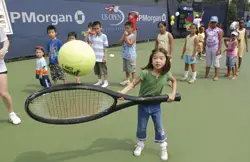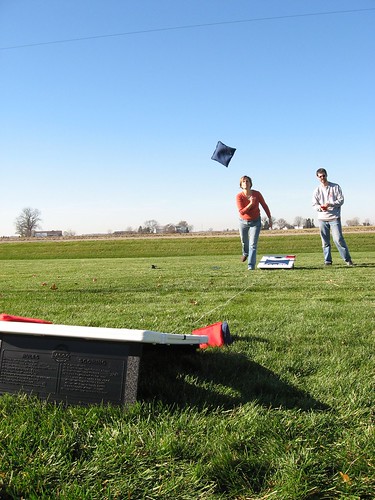Observe elementary students in a formal or informal play setting as they play any sport such as basketball, softball, soccer, tennis, etc. Utilize the four stages of game play to carefully determine what stage represents their level of play. Provide a brief written description of their skill level and stage of play. Write three to five recommendations for steps that could be taken to improve their level of play.
I observed a kindergarten class playing tennis, and they were definitely working on the first stage of game play which is controlling an object. They focused their attention on learning how to control the racket while striking a moving object. Since the long handled implement was foreign to most of the students, this proved challenging for most of the students, until they became more comfortable swinging it. They started by striking balloons with the forehand and backhand straight up in the air. The object was to hit the balloon just hard enough to go over their head, but not so far as to lose control of it.
| Image from |
To improve their level of play, I would continue having them hit the object straight up, but instead of using just a balloon I would give the students a slightly heavier ball, such as a small beach ball. This would provide a more challenging movement, because it will not only move faster, but the students will feel the impact on the racket more. The next step would be for the students to go back to the balloons, but instead of hitting it to themselves they will hit it over a low net to a partner. The next stage from here would be to have the students continue hitting over a net to a partner, but now they will use the beach ball. If the ball is full enough, it will bounce giving the students an even better feel for how a real tennis game may go.
Explain how you would use the four stages of game play by Rink (1985) as a rubric with students in your own physical education classes.
The four stages of game play fall in line with how we use progressions in our lessons, so it would naturally fit in. This model will allow the teacher to create a sequence of events that will build students up gradually as their skills progress. I would use the rubric to help me create my lessons, knowing where I want my students to end up. The rubric will allow me to almost set milestones of where the students will be in the future.


